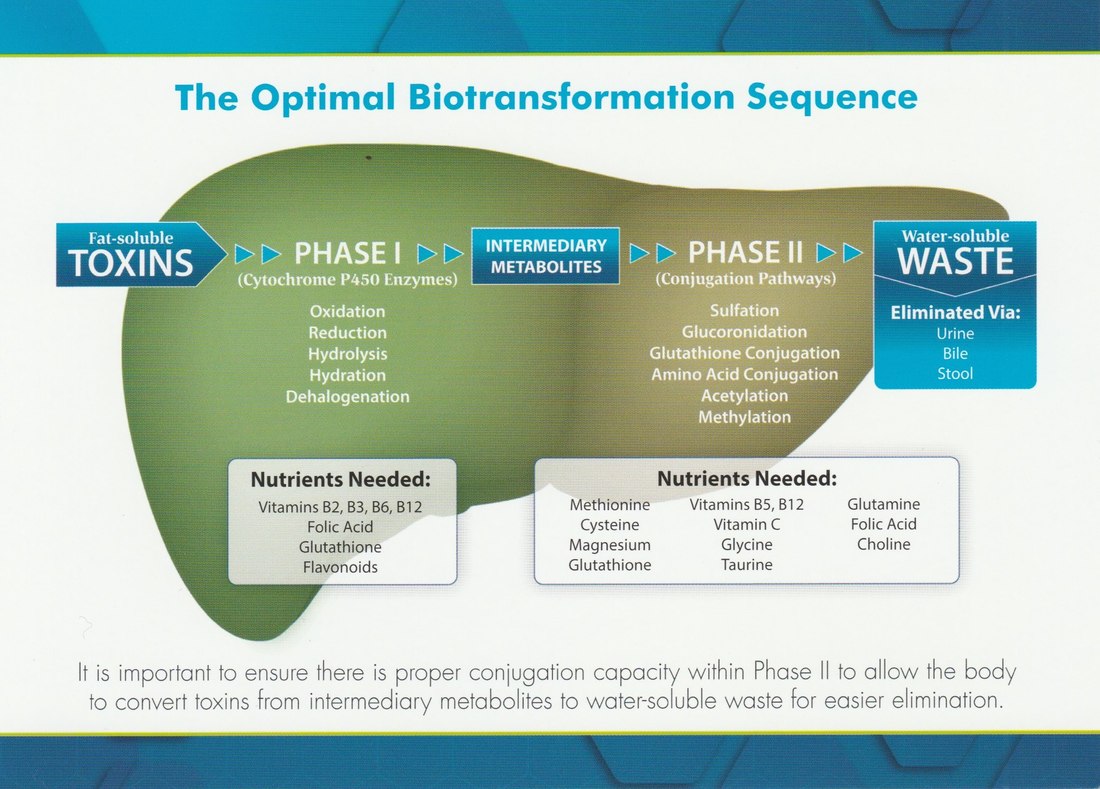If you're hip with holistic health, it's likely that you've endeavored a liver cleanse or detox...or been encouraged to do one...and with good reason. In 2002, the Environmental Working Group conducted a small study (9 participants) to measure the chemicals found in their blood. A total of 210 chemicals were found, each participant housing an average of 91 compounds. Heavy metals, chlorinated and brominated chemicals, PCBs, pesticides and herbicides, plastics and plasticizers, parabens and phthalates were all found. These compounds get stored in fat and bone, disrupting homeostasis and our efforts (both conscious and unconscious) at acquiring health.
The question is not "do I need to detox?" but "how do I detox effectively?"
Many people can navigate their lives without feeling the effect of this "body burden." Others experience symptoms of toxification, including autoimmune disease, allergies, food sensitivities, chronic fatigue, brain fog and hormone imbalance.
Thankfully, detoxification is a daily process in the body, not something that waits for an annual cleanse. More appropriately called "biotransformation," detoxification occurs in phases:
- To begin biotransformation, toxins and metabolites must first be transported to the liver. This is considered to be phase 0.
- In phase 1, the liver rearranges these chemicals into intermediates, which are either more or less harmful than their "parent" forms. For this reason, we need to keep the momentum going so these intermediates shuttle right into phase 2.
- The function of phase 2 biotransformation is to attach molecules that make the chemical water-soluble and safe to enter the bloodstream. There are multiply ways the liver accomplishes this - processes called methylation, acetylation, acylation, sulfation and glucuronidation.
- Once phase 2 is complete and the safer chemical compound enters the bloodstream, it's time to get it out of the body. Phase 3 of biotransformation occurs mostly in the kidneys and colon, where toxins are eliminated in urine and stool. Phase 3 also occurs in the lungs and skin where toxins are eliminated in our breath and sweat, but to a lesser extent.
- Minimize your exposure:
- Drink filtered water
- Eat organic foods
- Avoid fish known to be high in mercury: tuna, swordfish, king and Spanish mackerel, orange roughy, marlin, grouper and Chilean bass.
- Install an air filter in your home
- Replace synthetic fragrances in your lotions, perfumes, air fresheners and candles with pure essential oils
- Air out your dry cleaning before hanging it in your closet
- Remove your shoes before entering your home
- Evaluate the safety of your sunscreen, skin care and cosmetics
- Minimize your use of prescription and over-the-counter drugs, like Tylenol
- Evaluate the safety of your household goods including paint, furniture, mattresses and bedding, lawn care, and cleaning products.
- Maximize your diet. Here are some whole food solutions to our detoxification needs:
- Colorful plant foods contain antioxidants and phytonutrients that protect our tissues from the harmful metabolites and oxidative stress created in phase 1. Eat a rainbow in 5-9 servings of vegetables and fruits daily to lay a solid detox foundation.
- Two plant families offer superstar detox support: brassicas (broccoli, cauliflower, cabbage) and alliums (onions, garlic, scallions). Eat them daily!
- Green and rooibois tea: drink several cups daily
- Cook with detoxifying and anti-inflammatory herbs and spices, especially ginger, chilies, cumin, coriander, black pepper, rosemary and turmeric.
- Selenium deficiency impairs detoxification efforts, making mushrooms and Brazil nuts key ingredients.
- Support the movement of toxins from your body to the toilet: drink half your body weight in fluid ounces. That daily bowel movement is also a crucial factor! Eat fermented foods, take probiotic supplements and eat foods high in fiber (30-50 grams per day) to address digestive imbalances.
- Engage in detox-promoting self-care:
- Castor oil packs applied over the liver,
- Constitutional hydrotherapy,
- Daily physical activity,
- and sweating in the sauna all help
Recommended Reading:
Clean, Green and Lean by Dr. Walter Crinnion
References
Body Burden (2002), Environmental Working Group
Flockart Table: P450 Drug Interactions, Inducers and Inhibitors (n.d.) Indiana University Department of Medicine
Plant Consumption and Liver Health (2015), Evidence-Based Complementary and Alternative Medicine
Lectures by Dr. Walter Crinnion (2015), University of Western States
| Jesse Haas, CNS, LN is a licensed functional nutritionist and certified health coach. She was a founding partner of Wellness Minneapolis and was an active practitioner with the clinic from 2014-2022. To connect with her regarding functional nutrition and health coaching services, please follow this link. |



 RSS Feed
RSS Feed